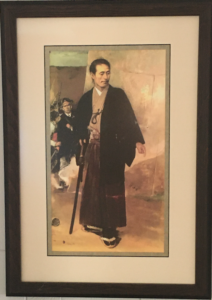Okada Izō was one of the three most notorious assassins of the Bakumatsu era. The novelist Shiba Ryōtarō writes of the “overly intense physical strength and stamina” with which Izō was naturally endowed. By age fifteen, Izō had already started training on his own—not with a bamboo practice sword commonly used in the training hall but with a heavier and lethal oaken sword he had carved himself, “wielding it. . . from morning to night,” with such ferocity that his “body would be wasted,” thus developing extraordinarily powerful arms and the ability to handle a sword with great speed. The original purpose of a sword was to kill people. But “in the Tokugawa era it became a philosophy. Izō [however] . . . taught himself fencing as a means of killing.” He was “intrepid by nature and fond of the martial arts,” wrote one local historian in 1928. His sword “attack came swift, like a falcon, as was apparent in his nature—which was why [his sword master Takéchi Hanpeita] was so fond of him,” according to another source.
The above is from my recently published Samurai Assassins.



